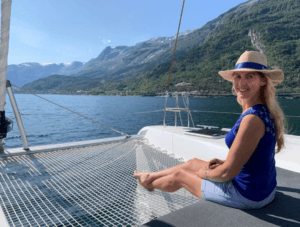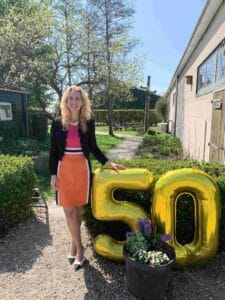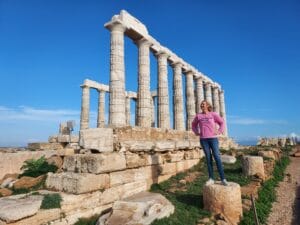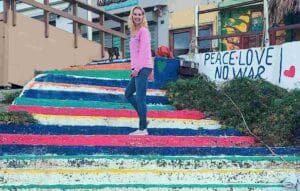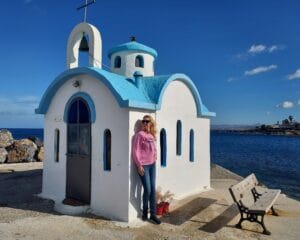For the last 5 weeks we have been sailing along the coast of Sicily and visiting the island. The largest island in the Mediterranean Sea is approximately 250 by 100 kilometers in size, so it is about half the size of the Netherlands. More than 5 million inhabitants live in Sicily, and the western part of Sicily is only 150 km away from Africa (Tunesia). These are the places we have visited at Sicily and that I will write about below:

We did the crossing through the Strait of Messina from the mainland of Italy (the province of Calabria) to Sicily. We choose the smallest part in the Strait, in the north, which is 3 kilometers wide (maximum width is 8 km). I wrote about making the crossing in this blog, and how great it is to see Mount Etna coming closer and closer while you are sailing, it’s about 3.300 meters high, with snow on the top.


1. Mount Etna
Definitely the highlight of our visit to Sicily! Also literally, because even 50 km south we continued to see the mountain on the east side of the island. We celebrated Christmas on Etna and enjoyed the villages at the foot of the mountain. We recorded our trip on volcano Etna on this video:
We stayed about 1 week below the Etna in the harbor, I also did online training there in January. It was snowing at that time in the Netherlands, and in Sicily it was about 20 degrees, but I also could tell about snow to my participants, because on the top of the Etna there was snow 😉.

2. Catania
‘Where are we going to celebrate New Year’s Eve on 31 December 2023?’ That was the question we had and the answer came quickly: we saw advertisements everywhere about a great New Year’s party in the city of Catania, the largest city after Palermo. Catania and only 20 km from where we were at the east coast of Sicily below mountain Etna and a good opportunity to visit the city of Catania.
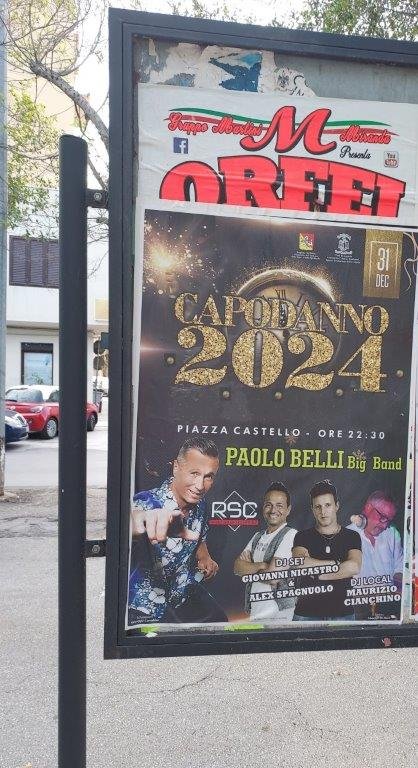
New Year’s is called ‘Capodanno’ which is short for ‘il capo d’anno’: the head/boss of the year, so the largest number (365) or the last day of the year.
In 1693 there was an earthquake which destroyed the city center of Catania, so when they rebuild the center, they made the streets extra wide so new earthquakes could not make a lot of accidents. This also means the buildings in the city are quite new, 17th and18th century.
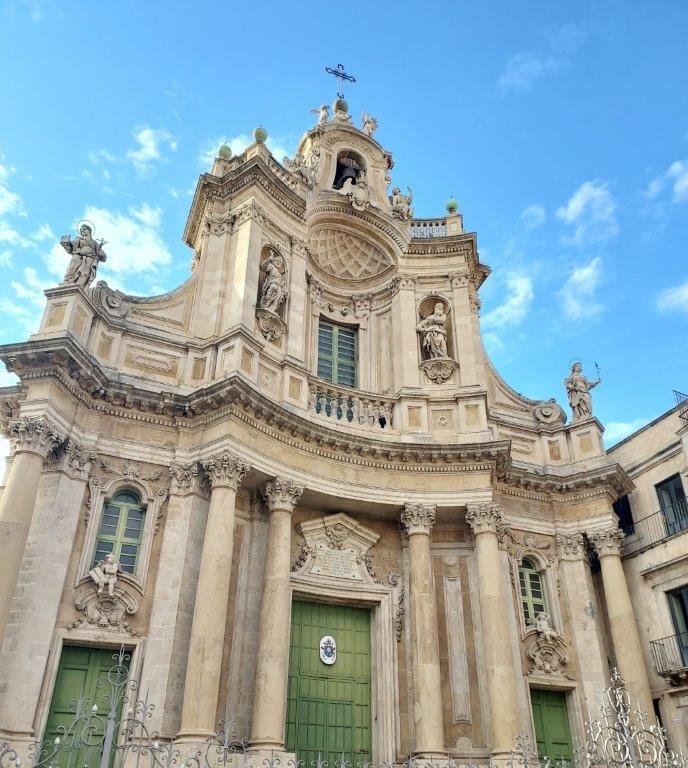
There is however an ancient amphitheater in the center, which was impressive to see.

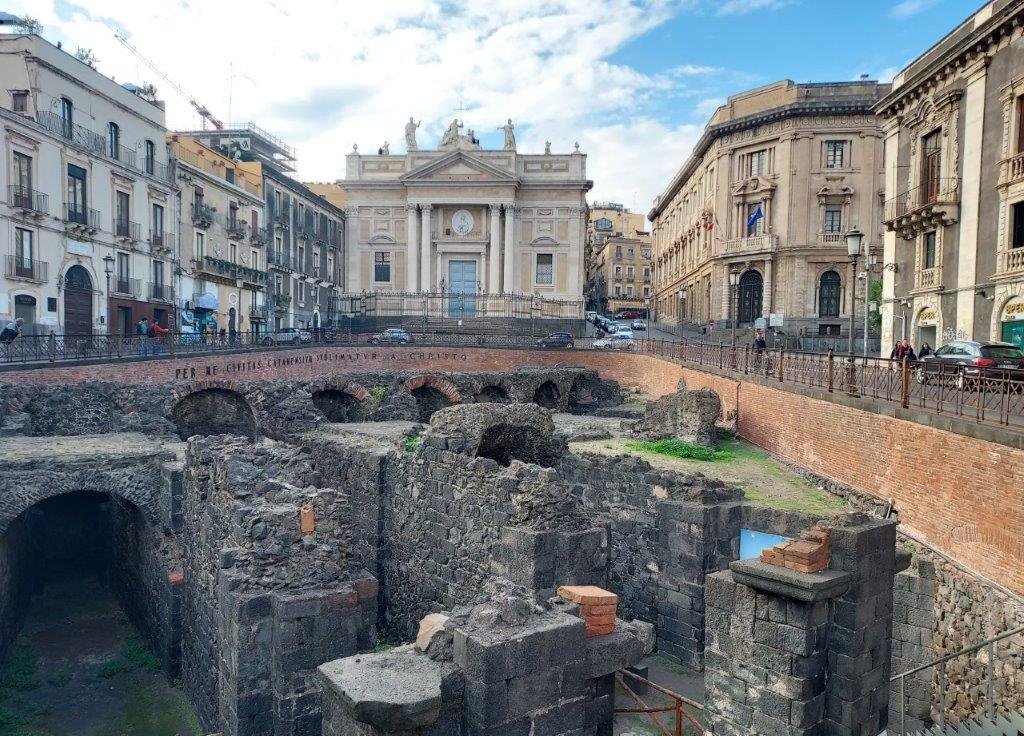
And in the weekend of New Years, the weather was great, just like Christmas around Mount Etna about 20-21 degrees. Also funny to experience: Mount Etna is about 20 km away, but you can still see it everywhere you walk.


But what we liked the most in Catania was a big street market that was going on.

We made a 1.5 minute video while walking on this food market, see below. You are immediately immersed in the cacophony of sounds: merchants loudly promoting their merchandise, fish being chopped into pieces, a scooter starting up, a wooden bench being dragged, blocks of ice that are thrown to the ground. The market was a bustling hub!
And your nose also joins in, with the smell of fish or roasted nuts. Often known as ‘La Pescheria’, this market is not only a place where locals do their daily shopping, but also an example of Sicilian tradition and hospitality.
I particularly enjoy looking at the stalls: shiny silver fish, real red meat, vegetables and fruit in all colors of the rainbow. And unique Sicilian delicacies such as caponata, arancini, and cannoli. It is nice when you watch to video to discover the sometimes beautiful Baroque architecture of Catania in the old streets. I think this is the essence of how we experienced Sicily: lively, hospitable, social, unpolished and messy. a cheerful gathering of people who move relaxed and wonderfully smoothly with and next to each other.
Then came 23.00h, so we walked to the city center (the Cathedral) and it was very busy. Like every year when we are abroad at New Years, we bring a bottle of champagne and 2 glasses, and wait for the countdown. The crowd around as smiled and nodded to us: it seems they also would have liked to bring that 😉. There was a relaxed atmosphere, also because of the temperature and the countdown was nice!


We walked in the city center after New Year’s celebration and everyone greeted everyone with: Buon Anno!
3. Augusta
After all the festivities end of December and beginning of January, we continued sailing down the eastcoast of Sicily and found this great Port of Augusta.


Augusta is a small city, but very charming and very Sicily.


When it comes to breakfast, we see a lot of people standing or sitting in the morning having breakfast. On their way to work, they have a quick breakfast: usually a croissant with espresso or cappuccino. Sometimes a cake or bread with fruit jam.


We walked along the coastline of Augusta, it is great to see the view here.

And walking around, enjoying this kind of weather in the middle of January. Especially when you are used to Dutch weather with cold days, rain and clouds around this time of year.
4. Brucoli
On a peninsula close to Augusta, is the village of Brucoli. We heard it was very picturesque, so we cycled there. Great to see the colorful houses and the Etna (now 50 km away!) in the background.


Walking in the streets of Brucoli, you notice how important the Etna is for people living here, we saw a lot of references to it, for instance these paintings on the walls.


We cycled around Brucoli and enjoyed the views on mount Etna.

On the way back from Brucoli to Augusta, around 17.00h at sunset, we saw some salt pans with flamingo’s standing there. Lovely to see!

5. Syracuse
Syracuse is also one of the highlights of Sicily. It was originally a Greek colony, founded in 734 BC. Over time, it became the most important Greek city in Sicily.
In 212 B.C. it was the Romans who conquered the city and completely destroyed it. During the battle for the city, physicist and mathematician Archimedes tried to defend the city using his knowledge of optics: through enormous mirrors he reflected the strong sunlight towards the Roman ships, which then caught fire. The catapult he invented was used during the defense of the city. You can now find these as souvenirs everywhere in Syracuse.
We will first mention Teatro Greco, which is actually the main reason why tourists visit Syracuse. It is one of the largest ancient theaters of antiquity. The theater was built in the first half of the fifth century BC. and was a place where residents could watch tragedy and comedy performances. Since 1914, performances that were popular in ancient times, have been held in May and June here. With 59 rows there is a total of 15,000 visitors.


Near the theater is the Ear of Dionysius, a limestone-carved cave. It owes its name to its similarity to the shape of the human ear. It can sometimes be that simple! It is 23 meters high and has a top like a teardrop. And because of this shape, the ear has very good acoustics. You’ll notice that quickly enough when you’re inside.

We found this area with caves very interesting. For example, this cave was dug in Greek/Roman times as a water storage for Syracuse.

Walking through the streets of Syracuse it is a joy to see the many old houses, churches and other buildings.
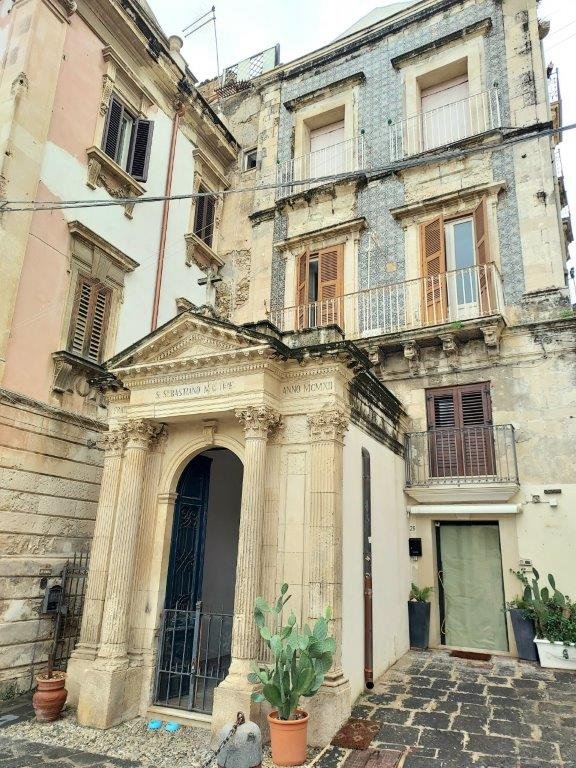
I came across this shop where they freshly make the delicacy of Sicily: cannoli. The origins of cannoli date back to the time of the Arab occupation of Sicily, around the 9th century. Cannoli consist of a crispy, roll-shaped shell of fried dough, filled with a sweet, creamy filling. The classic filling is made from ricotta, a fresh cheese commonly used in Italian cuisine, mixed with sugar. Depending on the variant, ingredients such as chocolate chips, pistachios, candied fruit or lemon or orange zest can be added to the filling for extra flavor.


I chose pistachio on one side and hazelnuts on the other side and so I walked through the narrow streets of Syracuse with a feast:

6. Caltagirone
We rented a car and drove into the hinterland of Sicily, because there is so much to see inland.
Caltagirone is known as the city where ceramics are made. And the city itself is the biggest advertisement for ceramics, because you see the majolica tiles everywhere: on vases, street signs, cups in restaurants.
Even the name of the city has to do with ceramics: Caltagirone is a corruption of the Arabic Qal’at Ghiran, which roughly means ‘Castle of the Vases’. Already during the rule of the Arabs, the residents here made colorful ceramic objects.
There are also many ceramic workshops where you can take a look.

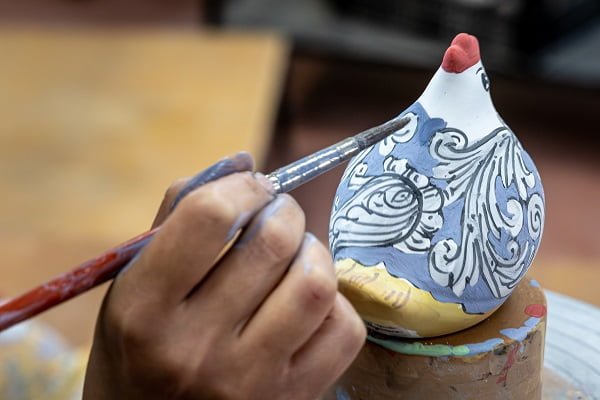
This staircase is famous: 142 steps covered with ceramic. The ‘Scalinata di Santa Maria del Monte’, which was started in 1606 to connect the lower and higher parts of Caltagirone. It took until 1884 before the stairs made of gray lava stone were finished.

Near the colorful stairs, on Piazza Municipio, is the Galleria Luigi Sturzo. It is the old seat of the regional senate, which was built in 1483. The great earthquake of 1693 severely affected the building. It then slowly fell into disrepair until it was turned into a theater in 1823. In 1960 it was decided to use this palazzo as a public covered gallery.

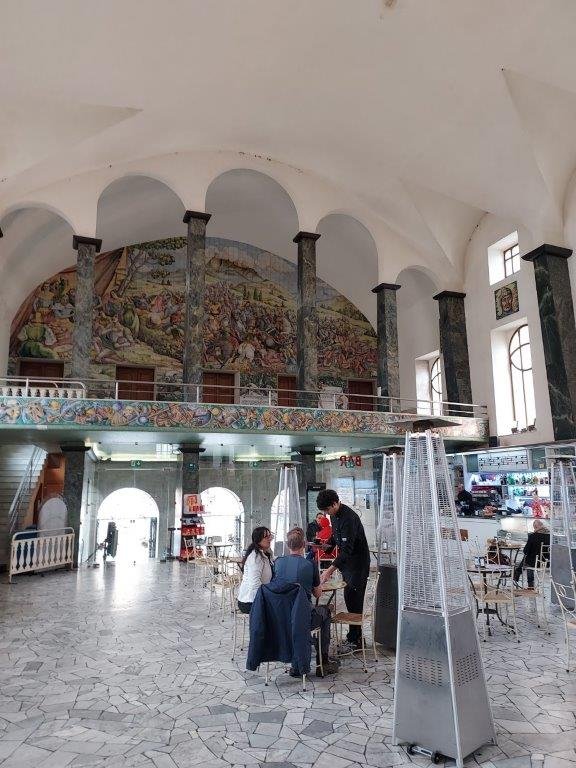
We also came across this nice advertisement at the Town Hall: an evening photo exhibition about Sophia Loren, the great Italian actress. Title: ‘Sophia Loren forever!’ Very nice!

Everywhere in Sicily, and especially here in Caltagirone, you see ceramic vases with the head of a man and the head of a woman. There is a story behind this and typically Italian, with a dose of passion! And also a bit sinister…
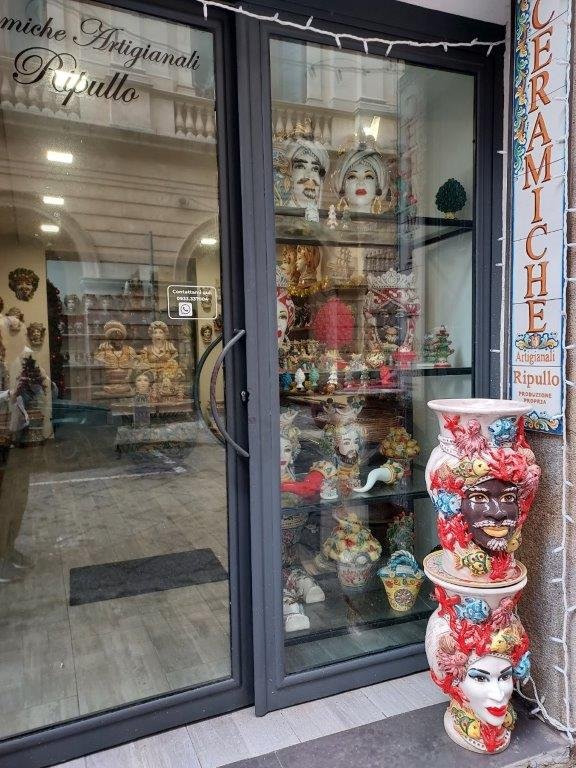
The story takes place in Sicily around the year 1000, specifically in Palermo, which was then under Arab rule. A Sicilian woman spent a lot of time taking care of her plants on her balcony. One day, a young Moor, who happened to be passing by, immediately fell in love with her. Despite some initial hesitation, a love affair quickly blossomed between them. However, the woman found out that the Moor already had a family. Out of anger and hatred, she slit his throat while he slept, planted his head in a pot and planted basil in it. This plant grew excellently, partly thanks to her tears. The striking appearance of the basil attracted attention, after which the woman decided to make more pots in the shape of a head, including one of herself, so that they would always symbolically be together.
7. Piazza Armerina
Near Caltagirone is the town of Piazza Armerina and there is Villa Romana del Casale, a Roman villa from around 300 AD. We were amazed by the 3000 m2 of very well preserved floor mosaics including hunting scenes, legends of gods and heroes and the so-called ‘bikini girls’. It is not clear who once owned the villa, but it must have belonged to a wealthy family. Because the many detailed mosaics are beautiful.


The ‘bikini girls’ are very striking: they are 10 athletes representing 10 sports.


8. Palermo
What an amazing city Palermo is! Beautiful squares with markets and lots of hustle and bustle.
It started well when we parked the car, because in that street there was a traditional puppet theater, which Sicily is also known for. The puppets stood there.


Then we walked under the Porta Nuova, built to celebrate the capture of Tunis from the Moors in the sixteenth century. There were so many sculptures to see that we walked under the gate 3 times ;).

Further on we came to the huge cathedral which also had narrow streets around the church.


Time for lunch: at the fish market we saw this stall and these men fried fresh fish for you to eat straight away. We wanted that! I think this is a great picture: it’s January, 20 degrees, they wear a thick coat and hat. On the left you see one of Italy’s favorite saints, the beloved Padre Pio and on the right you see an image of Don Corleone, the brutal mafia boss from the film ‘The Godfather’ played by Marlon Brandon. Sicily clearly has two faces.

And of course we had to see an Important Scene from the Godfather 3 movie with our own eyes in Palermo: the stairs of the opera house ‘Teatro Massimo’ where there was an attempt to kill the new mafia boss played by Al Pacino in the movie. The name of the building is certainly correct: the opera is the largest in Italy and the fourth largest in Europe, a huge building, 7700 m2!

A beautiful place in the historic center is Quattro Canti (or: four corners), it is a square in the historic center. And I continue to enjoy the beautiful statues of Mary that you see everywhere.


Naturally we were curious about the port of Palermo. We couldn’t imagine much about it yet: the city is old, but what would the port be like? The harbor turned out to be super hip and very modern! Many trendy restaurants around the harbor and beautiful views of the mountains.


We said goodbye to beautiful Palermo here at the harbor with coffee and tea and of course a fresh piece of ‘dolce’.
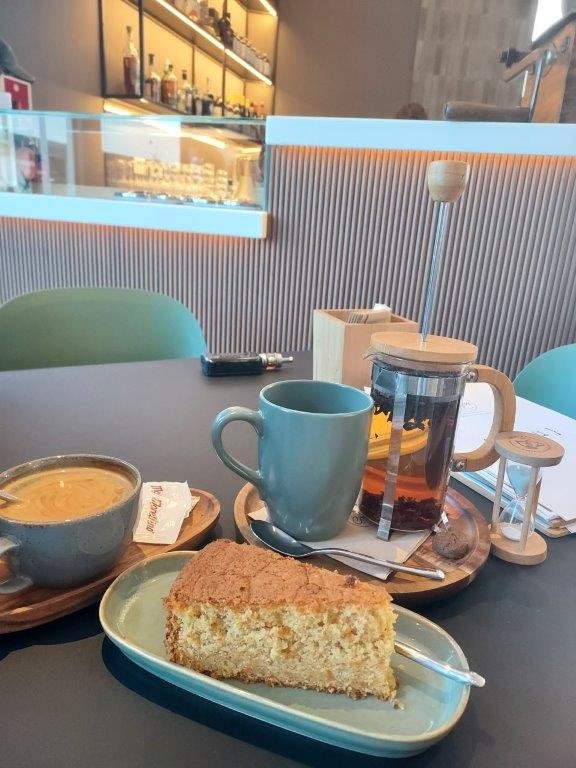
9. Cefalù
The last place we wanted to see was Cefalù. It is located on the north coast of Sicily and the village has a beautiful building under a steep rock (the Rocca). Cefalù owes its name to the Greek kefalé or cephas, which literally means ‘head’ or ‘hat’, a reference to the unusually shaped rock above the town.
We flew over the village with our drone, showing a beautiful view of the green rock next to the blue water and all the colored houses in front of it.
The cathedral is special because it was built at the time when the Normans ruled Sicily, in the 11th century. The style is therefore different in a country like Italy, less baroque, more sober, but therefore very striking and powerful as a colossus. Also see the cathedral square, which is on the UNESCO World Heritage List. The atmosphere here can still be described as medieval, with the narrow streets and authentic cobblestones.
We had a great hotel at the beach, we still could hear the water, like we used to on the boat, but now our beds don’t ‘move’ and we have unlimited hot water to shower 😉. Also during sunset, it was great to walk on the beach and watch the beautiful old town.

10. Caltanissetta
It was time to drive back to the east coast of Sicily where our boat was. We took lunch at the village of Caltanissetta, a stunning medieval village on top of a hill. And from there, we could see the Etna already shining, although it was still 100 km to drive by car to get to the coast!
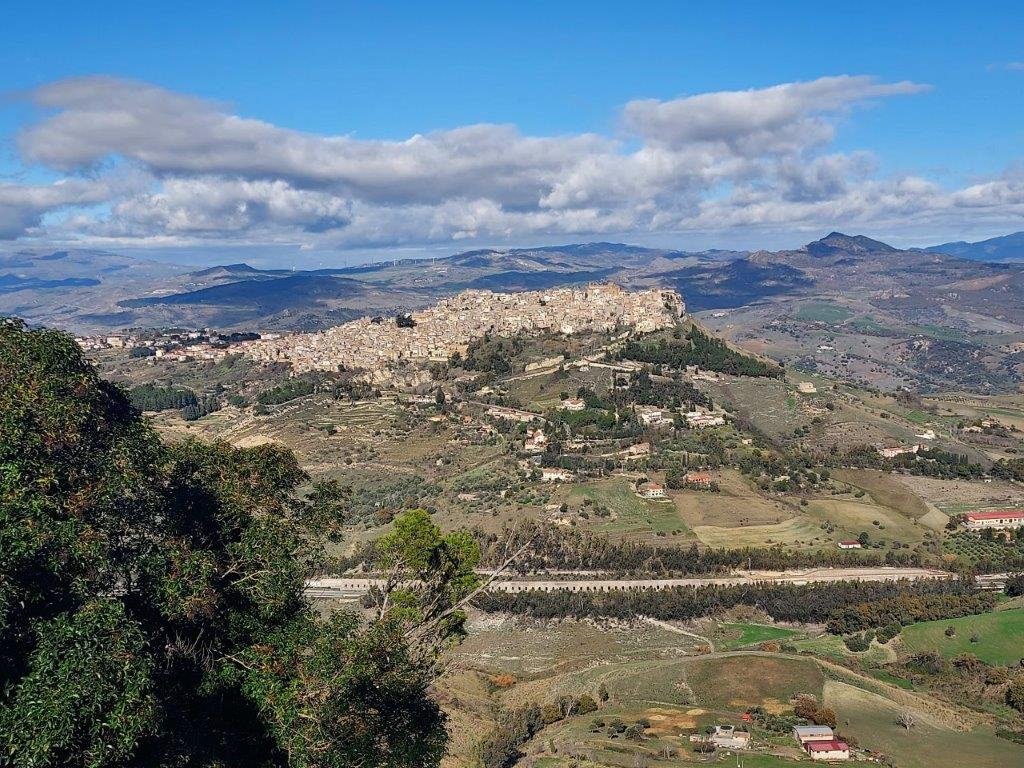

We spend a few extra days on the boat, because we enjoyed the Sicilian lifestyle so much. The ease with which you can walk to the beach, the ‘lido’ which also has beach restaurants where you can enjoy limoncello 😉.
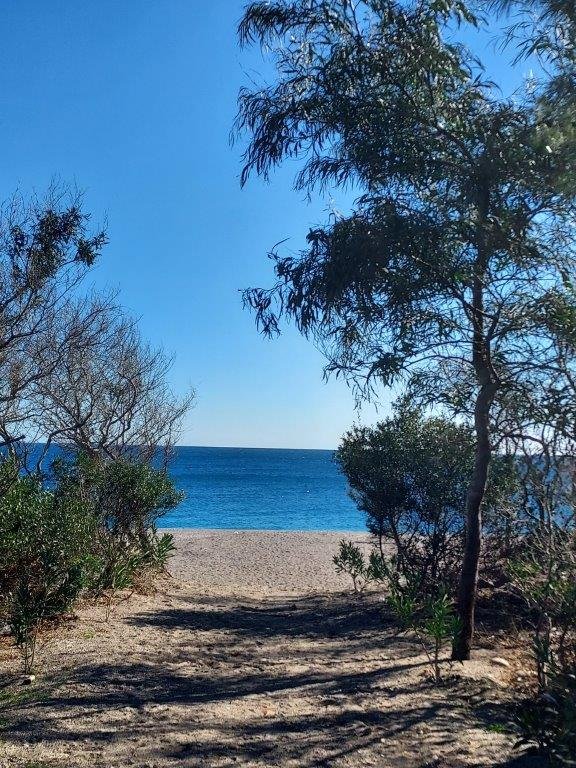

What was absolutely delicious was the fresh fish we ate in Sicily. For instance, when you look at this fishplate, you can see salmon, mussels, shrimps and in the middle swordfish. There is a lot of swordfish on the menu’s in Sicily, we noticed.

I looked up why. It turns out that in the Mediterranean the swordfish is most common in the waters between Sicily and Calabria, i.e. the Strait of Messina, because there are the most ideal conditions. The water temperature is usually 18-22 degrees, this channel is deep and the swordfish needs that, because it hunts octopuses that usually swim 700 meters deep. On average, a swordfish is 3 meters long and weighs 350 kilos! When it is not hunting, this predator prefers to swim on the surface and also makes jumps.
So now that we are crossing back to mainland Italy (the tip of the ‘Boot’) from Sicily, we will pay extra attention to jumping swordfish which should look like this:

